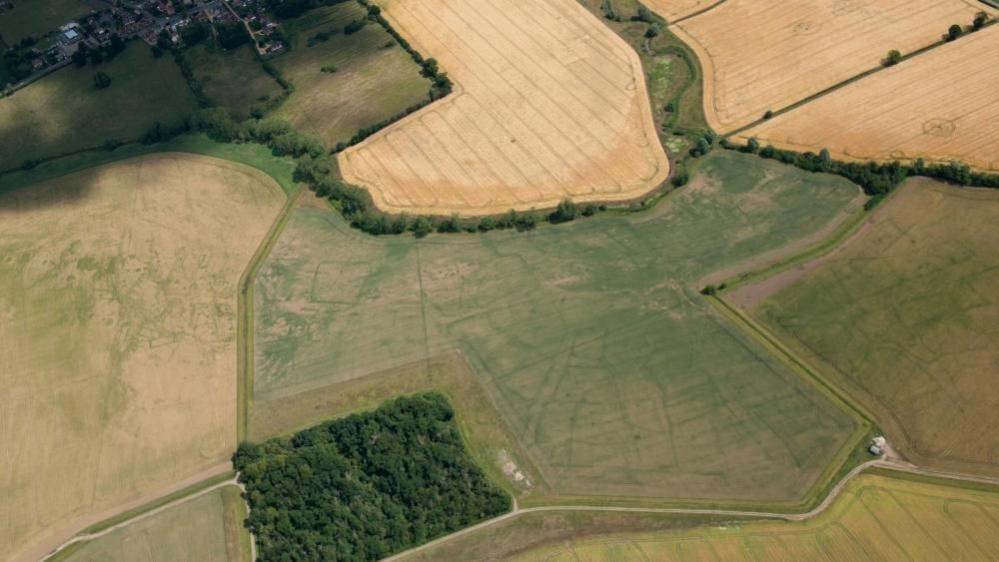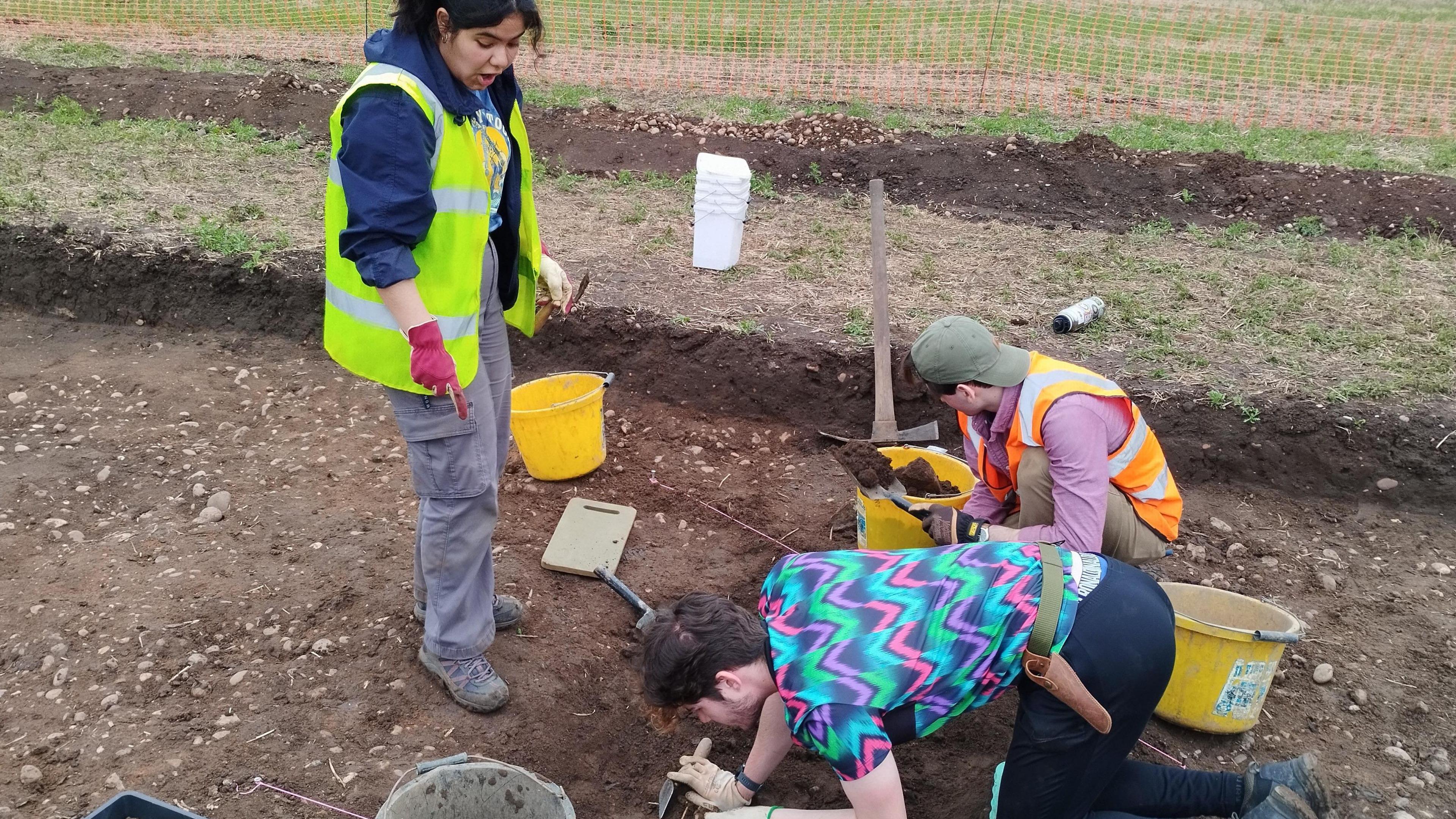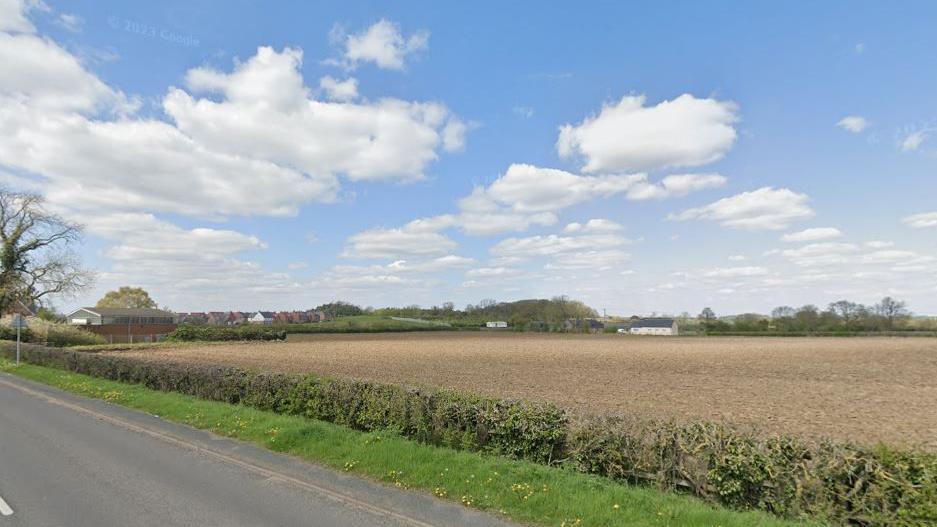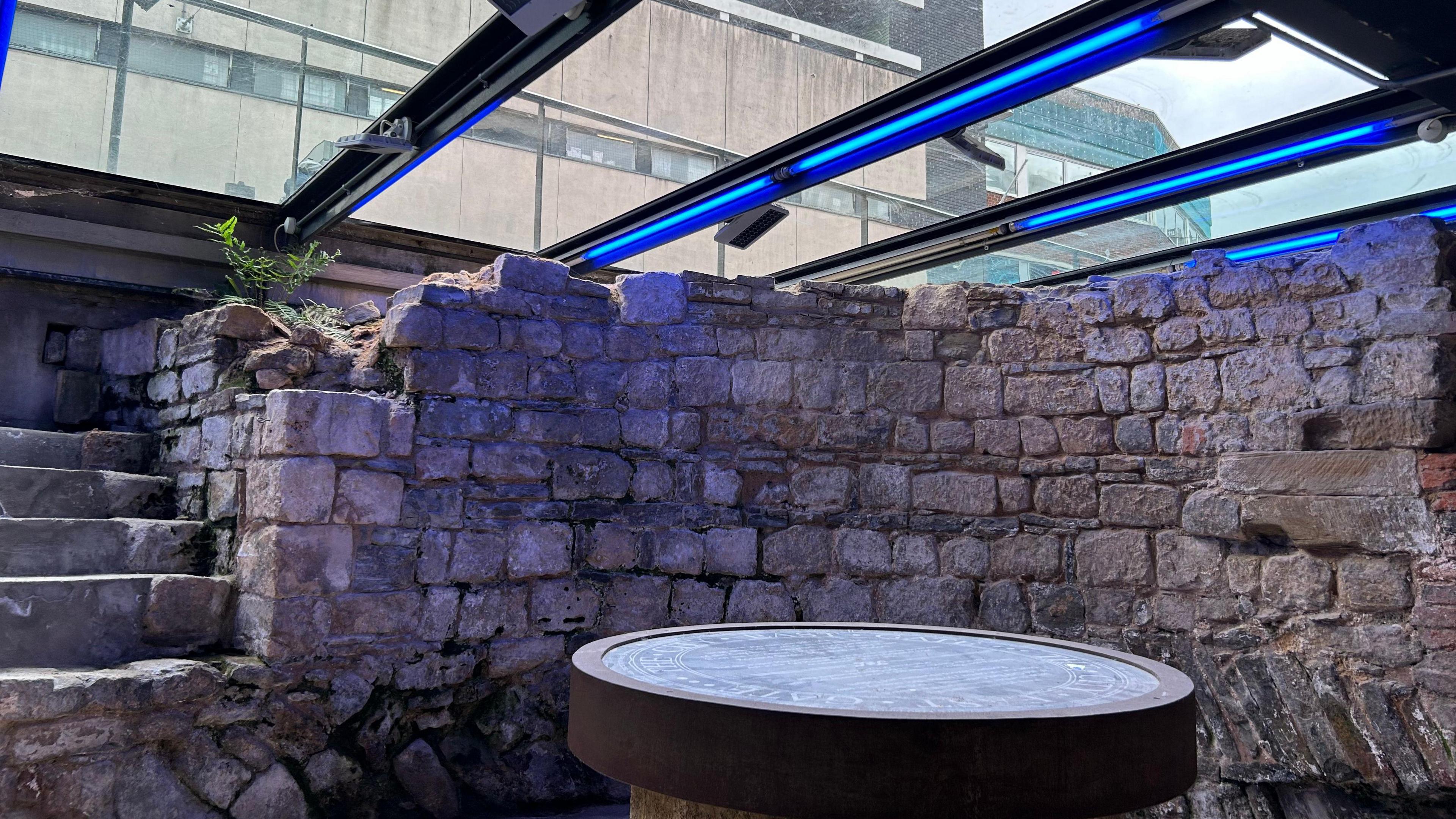Newly discovered Roman town given protection

The remains of a town has reshaped the understanding of Roman Cambridgeshire, a councillor said
- Published
The discovery of the remains of a small town "reshapes" the understanding of Roman life in one part of eastern England, according to a local politician.
The Department for Culture, Media and Sport has given the site near Great Staughton, external, Cambridgeshire, "heritage protection" as a "scheduled monument, external", on the advice on the advice of Historic England.
Lorna Dupre, Liberal Democrat chair of Cambridgeshire County Council's environment and green investment committee, said the discovery was "exciting and remarkable".
The remains were found during survey work for a solar farm.

Lorna Dupre described the Roman town discovery as "exciting and remarkable"
Historic England, a public body which aims to protect England's herotage, said scheduled monuments were sites considered to be of national importance.
The organisation said "scheduling" gave protection which assisted conservation.
Archaeologists' evaluations showed that buried features of the Roman town were well preserved and extended across about 75 acres (30 hectares), said Historic England.
The remains showed the "extensive streets" and "buildings of a highly organised Roman settlement of urban character".
Traces of domestic and industrial activities told a story about life in the town - close to modern day Grafham Water - over several centuries.
The Romans in Britain
Historic England's website said Britain was part of the Roman Empire, external for more than three and a half centuries. From the invasion under the emperor Claudius in AD 43 until rule from Rome ended in the early 5th Century, the province of Britannia was part of a political union that covered most of Europe.
In AD 43, Claudius launched an invasion of Britain, external and over the next 45 years the Roman army gradually extended its control over much of present-day England and Wales, and ventured into territory now in Scotland.
In the 3rd Century AD, several Roman forts, external were built along the coasts of east and south-east England and northern Gaul. All were built at strategically important coastal estuaries and inlets.
A Historic England spokeswoman said Brockwell Storage and Solar, the firm behind the solar project, had "amended" plans and applied for "heritage protection of the site".
Solar development was no longer proposed on the site of the Roman town.
The spokeswoman said the land would be "given over to pasture".
She said the "wider solar farm project" was going ahead.
"This is an exciting and remarkable discovery which reshapes our understanding of Roman Cambridgeshire," said Dupre.
"Whilst this area had previously been recognised as a place of historical interest locally, we were surprised by the scale and complexity of this well-established town."
She added: "There have only been a handful of schedulings in Cambridgeshire over the last decade and this is by far the most significant.
"This site is now our second largest Roman Scheduled Monument after the walled town of Durobrivae, five miles west of Peterborough."
The Romans in the East
A Roman site at Caister, Norfolk, external, was part of a chain of coastal forts along what the Romans knew as the Saxon Shore.
Chester House Estate, near Irchester, Northamptonshire, is one of Britain's best-preserved Roman small towns.
Camulodunum, external - now Colchester, Essex - was the capital of Roman Britain and Britain's first City. In AD60 Queen Boudica of the Iceni, led a rebellion against the Roman rulers and Camulodunum was attacked and burned
St Albans in Hertfordshire was a thriving town in Roman times, known as Verulamium.

Duncan Wilson said the Roman town found in Cambridgeshire was "significant"
Historic England's chief executive Duncan Wilson said the town was clearly "significant".
"The scale and diversity of the archaeological features give a remarkable insight into Roman life in the east of England and help us to understand more about when people came to this place, how they lived and worked, and why they left," he said.
"An extraordinary discovery which has an intriguing tale to tell."
Get in touch
Do you have a story suggestion for Cambridgeshire?
Follow Cambridgeshire news on BBC Sounds, Facebook, external, Instagram, external and X, external.
Related topics
- Published11 July 2024

- Published28 July 2024

- Published20 May 2024
